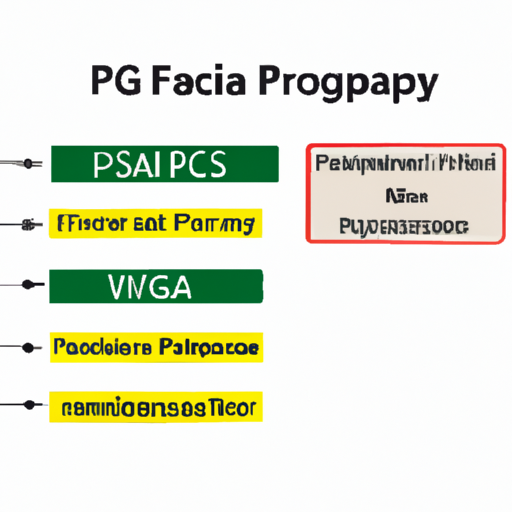

Field-Programmable Gate Arrays (FPGAs) are versatile integrated circuits that can be reprogrammed after manufacturing to perform a wide range of tasks. One key application of FPGAs is on-site programming, where the device is programmed directly on the circuit board without the need for a separate programming device. This allows for greater flexibility and customization in electronic systems, making FPGAs a popular choice for a variety of industries.

1. Low-Cost FPGAs: Low-cost FPGAs are designed for applications where cost is a primary concern. These devices offer basic programmability and functionality at a lower price point, making them ideal for budget-conscious projects. Low-cost FPGAs are commonly used in consumer electronics, IoT devices, and other cost-sensitive applications.
2. High-Performance FPGAs: High-performance FPGAs are designed for applications that require high-speed processing and complex algorithms. These devices offer advanced features such as high-speed interfaces, large amounts of programmable logic, and high-speed memory interfaces. High-performance FPGAs are commonly used in telecommunications, data centers, and other high-performance computing applications.
3. Mixed-Signal FPGAs: Mixed-signal FPGAs combine digital programmable logic with analog signal processing capabilities. These devices are ideal for applications that require both digital and analog processing, such as sensor interfaces, data acquisition systems, and signal processing applications. Mixed-signal FPGAs are commonly used in industrial automation, automotive, and medical devices.
4. Security FPGAs: Security FPGAs are designed to provide enhanced security features to protect sensitive data and prevent unauthorized access. These devices offer features such as secure boot, encryption, and tamper detection to ensure the integrity of the system. Security FPGAs are commonly used in military, aerospace, and other high-security applications.
5. Automotive FPGAs: Automotive FPGAs are designed to meet the stringent requirements of the automotive industry, including temperature, reliability, and safety standards. These devices offer features such as automotive-grade packaging, extended temperature range, and functional safety certifications. Automotive FPGAs are commonly used in automotive infotainment systems, driver assistance systems, and other automotive applications.
6. Industrial FPGAs: Industrial FPGAs are designed for harsh industrial environments, with features such as extended temperature range, rugged packaging, and high reliability. These devices are commonly used in industrial automation, robotics, and other industrial applications where reliability and durability are critical.
In conclusion, FPGA on-site programming door arrays offer a wide range of product categories to meet the diverse needs of different industries. Whether you need a low-cost solution for a consumer electronics project or a high-performance device for a data center application, there is an FPGA category that can meet your requirements. By understanding the key product categories of FPGA on-site programming door arrays, you can choose the right device for your specific application and take advantage of the flexibility and customization that FPGAs offer.
Field-Programmable Gate Arrays (FPGAs) are versatile integrated circuits that can be reprogrammed after manufacturing to perform a wide range of tasks. One key application of FPGAs is on-site programming, where the device is programmed directly on the circuit board without the need for a separate programming device. This allows for greater flexibility and customization in electronic systems, making FPGAs a popular choice for a variety of industries.

1. Low-Cost FPGAs: Low-cost FPGAs are designed for applications where cost is a primary concern. These devices offer basic programmability and functionality at a lower price point, making them ideal for budget-conscious projects. Low-cost FPGAs are commonly used in consumer electronics, IoT devices, and other cost-sensitive applications.
2. High-Performance FPGAs: High-performance FPGAs are designed for applications that require high-speed processing and complex algorithms. These devices offer advanced features such as high-speed interfaces, large amounts of programmable logic, and high-speed memory interfaces. High-performance FPGAs are commonly used in telecommunications, data centers, and other high-performance computing applications.
3. Mixed-Signal FPGAs: Mixed-signal FPGAs combine digital programmable logic with analog signal processing capabilities. These devices are ideal for applications that require both digital and analog processing, such as sensor interfaces, data acquisition systems, and signal processing applications. Mixed-signal FPGAs are commonly used in industrial automation, automotive, and medical devices.
4. Security FPGAs: Security FPGAs are designed to provide enhanced security features to protect sensitive data and prevent unauthorized access. These devices offer features such as secure boot, encryption, and tamper detection to ensure the integrity of the system. Security FPGAs are commonly used in military, aerospace, and other high-security applications.
5. Automotive FPGAs: Automotive FPGAs are designed to meet the stringent requirements of the automotive industry, including temperature, reliability, and safety standards. These devices offer features such as automotive-grade packaging, extended temperature range, and functional safety certifications. Automotive FPGAs are commonly used in automotive infotainment systems, driver assistance systems, and other automotive applications.
6. Industrial FPGAs: Industrial FPGAs are designed for harsh industrial environments, with features such as extended temperature range, rugged packaging, and high reliability. These devices are commonly used in industrial automation, robotics, and other industrial applications where reliability and durability are critical.
In conclusion, FPGA on-site programming door arrays offer a wide range of product categories to meet the diverse needs of different industries. Whether you need a low-cost solution for a consumer electronics project or a high-performance device for a data center application, there is an FPGA category that can meet your requirements. By understanding the key product categories of FPGA on-site programming door arrays, you can choose the right device for your specific application and take advantage of the flexibility and customization that FPGAs offer.